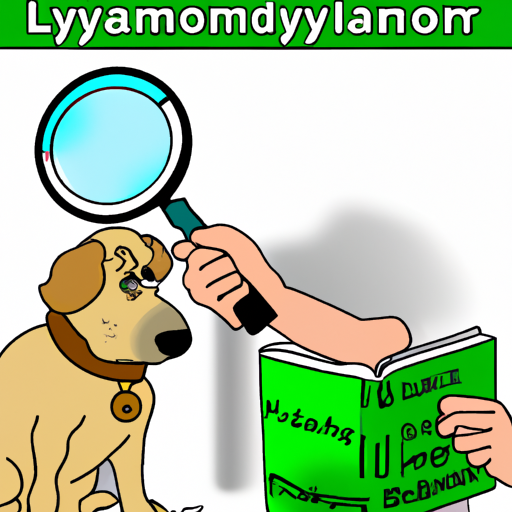As a devoted caregiver, you’re always on the lookout for your furry friend’s health, aren’t you? Your canine companion’s wellbeing is undeniably paramount, and it’s crucial to be aware of the early signs of common ailments that can affect them. One such ailment this piece will delve into is lymphoma in dogs.
1. Understanding What Lymphoma Is
Lymphoma, a canine cancer that affects lymphocytes – a type of white blood cell, can be a daunting diagnosis for any pet owner. It’s a disease that can strike with little warning, but being informed about its initial signs can help you catch it early, potentially prolonging your pet’s life.
2. The Early Signs of Lymphoma
The symptoms of lymphoma in dogs can be subtle initially. They may include:
- Swollen lymph nodes: This is often the first sign. The nodes under the jaw or around the shoulder are usually the most noticeable.
- Loss of appetite or unexplained weight loss: If your dog is eating less than usual or losing weight without any changes in diet or exercise, it could be a sign.
- Lethargy: Is your usually energetic companion showing signs of weakness or fatigue? This change in behavior can be an early symptom.
- Difficulty breathing or coughing: These symptoms can occur if the lymphoma is affecting the chest area.
Don’t hesitate to consult your vet if you notice any of these signs. Remember, early detection can make a significant difference in treatment outcomes.
3. The Different Types of Canine Lymphoma
Lymphoma in dogs can be classified into five different types. The table below provides a brief overview of each type and the affected areas:
| Type of Lymphoma | Affected Area |
|---|---|
| Multicentric | Affects the lymph nodes |
| Gastrointestinal | Affects the stomach and intestines |
| Mediastinal | Affects the mediastinum (around the heart and lungs) |
| Cutaneous | Affects the skin |
| Extranodal | Affects specific organs |
Each type exhibits a different set of symptoms, and the prognosis varies depending on the type and the stage of the disease.
4. Treatment and Prognosis
Treatment options for canine lymphoma typically involve chemotherapy, radiation therapy, and surgery, depending on the type and stage of the disease. The prognosis varies, but early detection and aggressive treatment can significantly improve survival rates.
5. FAQs
Q: Can diet influence lymphoma in dogs?
A: While no specific diet has been proven to prevent or cure lymphoma, a balanced and nutritious diet can boost overall health and help your dog better tolerate treatments.
Q: Is lymphoma painful for dogs?
A: Dogs with lymphoma generally don’t show signs of pain, but they may experience discomfort from symptoms like swollen lymph nodes or lethargy.
Q: Can dogs live normal lives with lymphoma?
A: With proper treatment, many dogs can live a normal life for months or even years after a lymphoma diagnosis.
Remember, your love and care, along with early identification and prompt treatment, can significantly improve your pet’s quality of life, even in the face of lymphoma.



